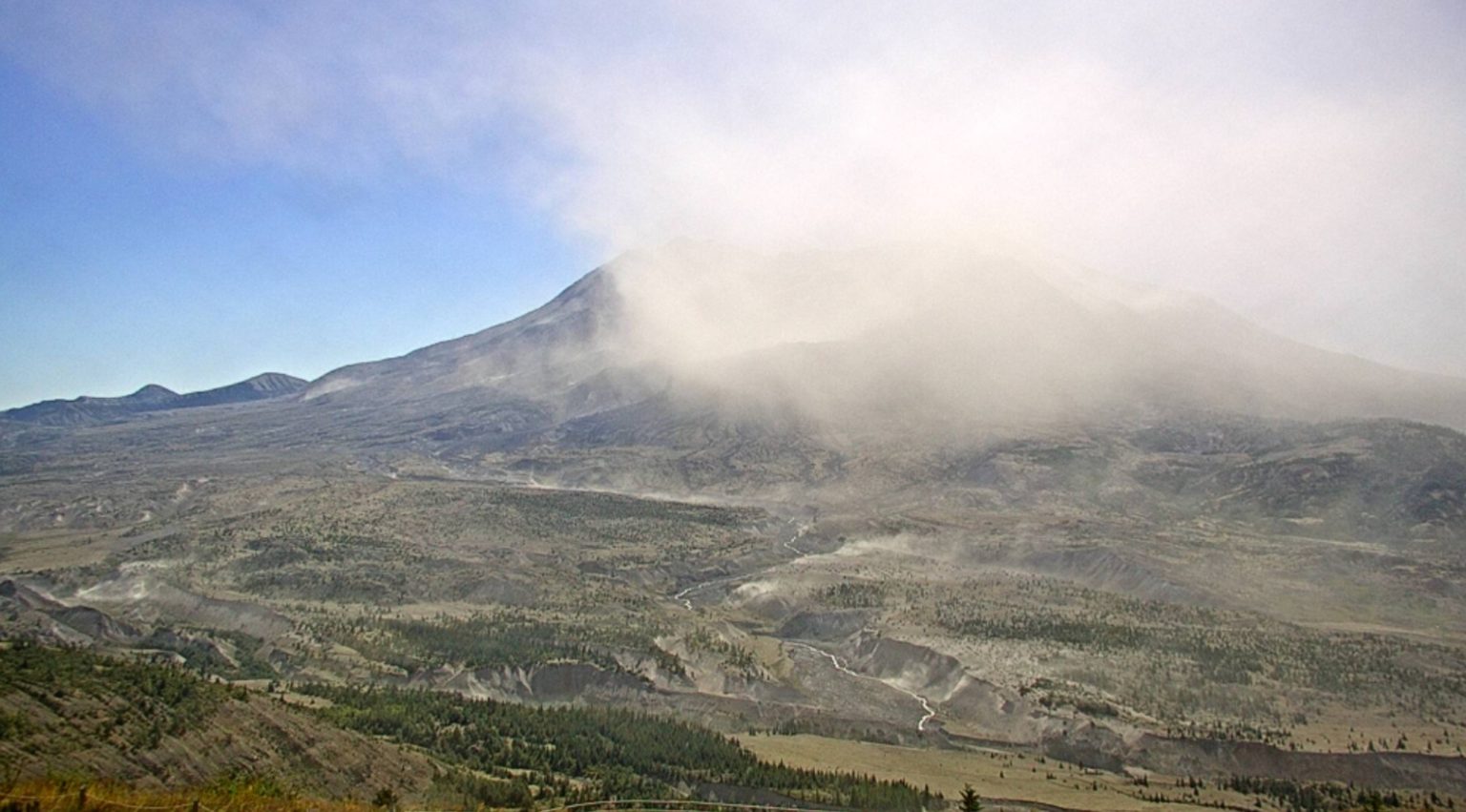Mount St. Helens Ash Cloud Causes Brief Alarm, But No Eruption
Residents near Mount St. Helens experienced a moment of concern Tuesday when clouds of ash became visible in the air around the notorious volcano. National Weather Service (NWS) meteorologists in Portland, Oregon quickly reassured the public that the mountain was not erupting. “The winds are slowly in the process of subsiding as we go throughout the remainder of the day,” explained NWS meteorologist David Bishop from the Portland office. The sight of ash clouds naturally triggered anxiety given the mountain’s devastating history, but this event was simply Mother Nature recycling the past rather than creating new volcanic activity.
Mount St. Helens holds a somber place in American history as one of the nation’s most dangerous volcanoes. Its catastrophic eruption on May 18, 1980, stands as the deadliest volcanic event in U.S. history, claiming 57 lives, causing over $1 billion in damage, and destroying hundreds of homes across Washington state’s Skamania County. Given this tragic background, any signs resembling volcanic activity naturally raise alarms among both residents and authorities. The mountain has been relatively quiet in recent decades, but its potential for destruction remains etched in public consciousness, making quick and accurate information during unusual events critically important.
What appeared to be a new eruption was actually an atmospheric recycling of history. The U.S. Geological Survey (USGS) explained in a Tuesday report that “Strong easterly–southeasterly winds in the vicinity of Mount St. Helens have picked up loose volcanic ash deposited during the 1980 eruptions and are carrying it to the west–northwest.” Commercial pilots reported seeing the resuspended ash, which created a dramatic visual effect captured on webcams monitoring the mountain. The ash clouds appeared substantial enough that the NWS felt compelled to post on social media platform X (formerly Twitter): “Mt. Saint Helens is NOT erupting. Volcanic Ash from the 1980s is being lofted back into the air from the strong east winds.” This phenomenon isn’t unprecedented—it occurs occasionally during dry, windy conditions when decades-old ash deposits become airborne again.
Despite not originating from new volcanic activity, authorities cautioned that the airborne ash still presented potential hazards. “Resuspended volcanic ash should be considered hazardous and could be damaging to aircraft and health,” warned the USGS in their report. Volcanic ash differs significantly from ordinary dust or smoke particles, containing tiny jagged shards of rock and glass that can damage aircraft engines and respiratory systems. KIRO 7 News Chief Meteorologist Morgan Palmer echoed this concern, noting that “aircraft should avoid it as volcanic ash can damage engine parts.” The USGS maintained Mount St. Helens at its normal alert level, emphasizing that the volcano remains at “background levels of activity” despite the dramatic appearance of ash clouds.
The images captured on webcams showed the mountain shrouded in what appeared to be ominous clouds, creating an unsettling visual reminder of the volcano’s destructive potential. For longtime residents of the Pacific Northwest who lived through the 1980 eruption, such sights can evoke powerful memories. The 1980 cataclysm transformed the regional landscape, flattening forests, damming rivers with debris, and dramatically altering the mountain itself by removing its northern flank and reducing its height by about 1,300 feet. While Tuesday’s event was merely wind-driven redistribution of old ash rather than new volcanic activity, it served as a poignant reminder of the mountain’s volatile history and the importance of continued monitoring and quick public communication.
According to meteorologist Bishop, the strong winds responsible for lifting the ash were expected to continue throughout Tuesday before shifting later in the week. Weather forecasts predicted winds would change direction to blow from the west into the weekend, likely dispersing any remaining airborne ash. While this particular event posed limited danger beyond potential air travel disruptions and minor respiratory irritation for those in the affected area, it highlighted the ongoing legacy of one of America’s most significant natural disasters. The quick response from authorities to clarify the situation demonstrated the well-established monitoring and communication systems now in place for this closely watched volcano—systems developed in part because of lessons learned from the 1980 tragedy.


